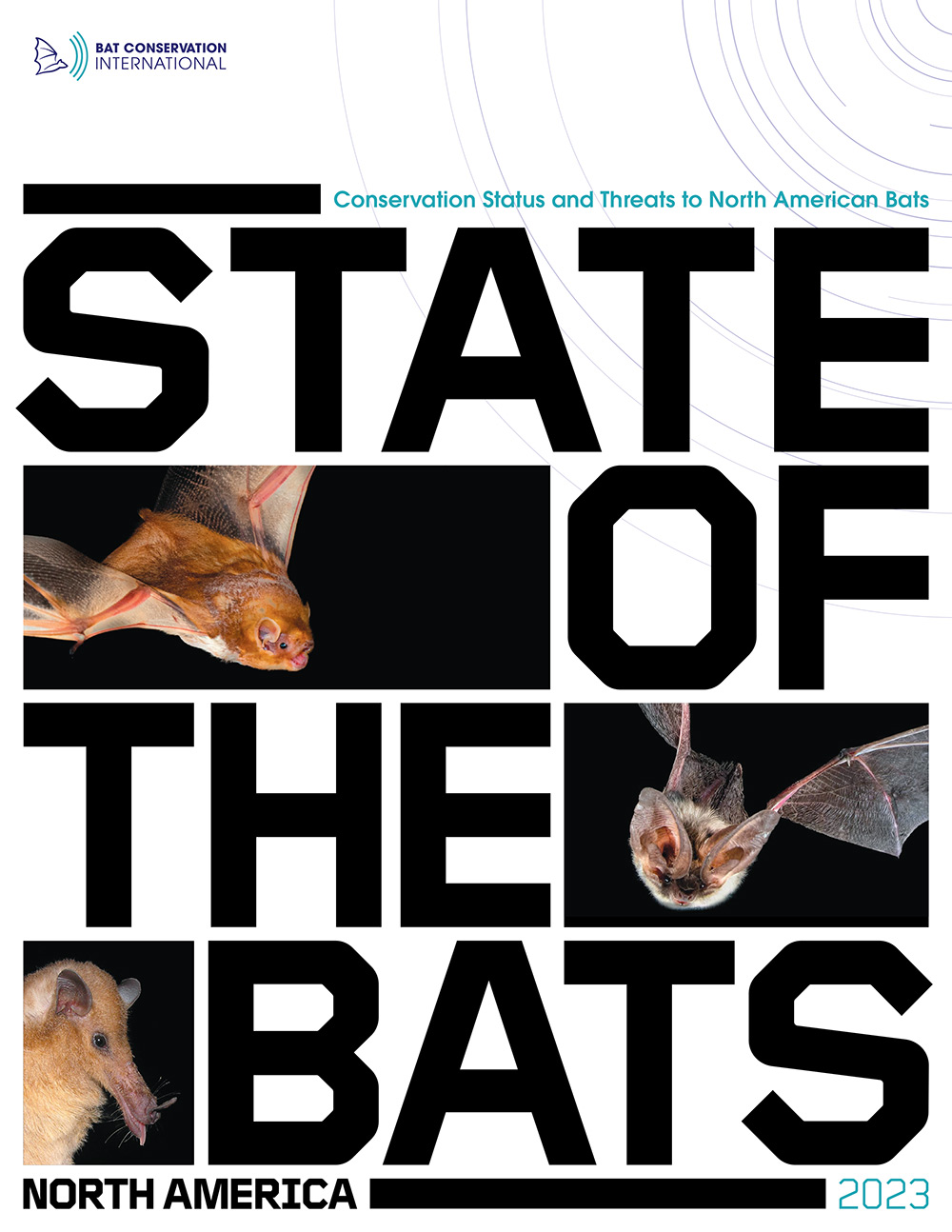Annual Report 2023
Global Cooperation and Teamwork to Save Bats







MESSAGE FROM our EXECUTIVE DIRECTOR
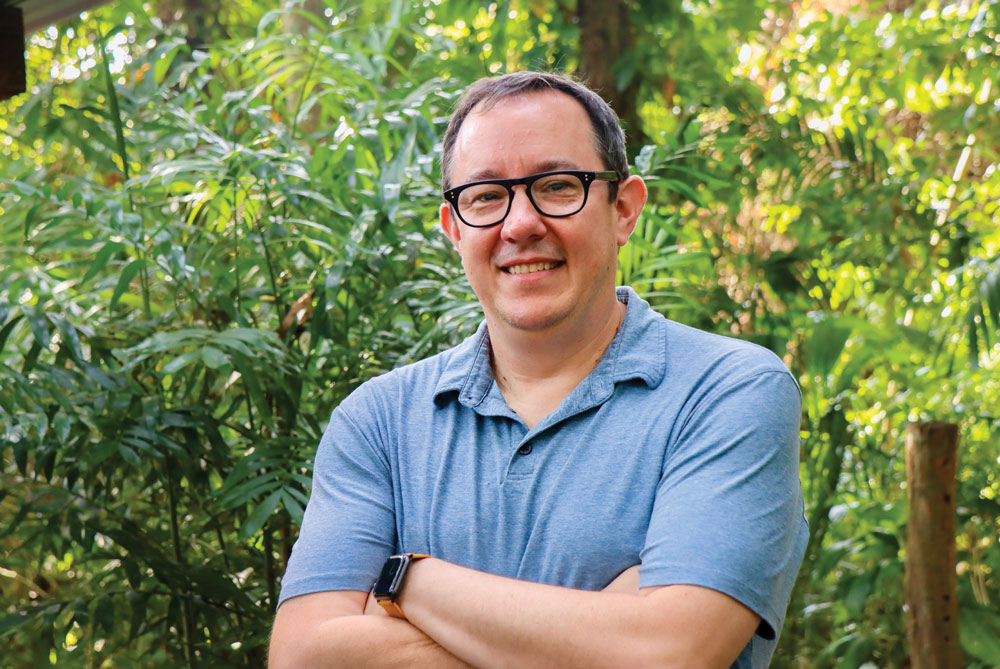
Global cooperation is the key to saving bats
BCI has been working to protect the world’s bats for more than 40 years, and we have greatly expanded our efforts and strengthened international operations to emphasize the “I” in BCI. We have built a global team of expert conservationists with BCI leaders in Latin America and the Caribbean, Africa and South Asia, and North America. New program staff have joined the team to lead conservation efforts in India and Brazil. We have special focus on new efforts in Mexico, Colombia, and Kenya. All told, BCI now reaches 14 of the most Endangered bats in the world with on-the-ground support.
Bats are an integral component of global ecosystems, and our network of partners has worked together to learn more and protect them, from the discovery of a Hill’s horseshoe bat roost in Rwanda, to the expansive work of our bi-national Agave Restoration Initiative, to a first-ever State of the Bats Report evaluating the status of bats in three countries.
We are eternally grateful to our partners. We could not do any of this alone. Global cooperation and teamwork makes it possible to scale our impact to meet global challenges. We sincerely appreciate the unwavering trust and support from our partners and donors, who work with us side-by-side and enable us to deliver meaningful, scientifically sound strategies to save bats worldwide.
Mike Daulton
MISSION 1
Hill’s horseshoe bats roost discovered Key finding for species
They needed to learn more in order to provide management recommendations to the park to ensure the bat was protected in the management plan, so in August of 2022, BCI and the multi-national team (including Nyungwe Park rangers and the Rwanda Wildlife Conservation Association) returned to the rainforests of Rwanda. Their aim was simple: to again capture a Hill’s horseshoe bat and track it back to where it roosts. To date no one knows what the bats use for shelter during the day, the size of the colonies they form, movement patterns, or diet, which are all key factors when designing conservation management plans to protect a species.
After multiple nights without success, the team was finally able to catch a single adult female Hill’s horseshoe bat and radio-track her back to her roost, which they found was also used by other Hill’s horseshoe bats. This was an important discovery because up until this point scientists had believed it was likely the species roosted in caves, since other bats in the family commonly roost in caves, and there weren’t many large trees in the area they would have thought were suitable. However, the bat they followed back—along with the other bats roosting in the location—roosted in a tree. This is vital information when seeking to prioritize areas for conservation and learn more about a species. It is key to know where to find them. Locating a roost also allows for the collection of guano samples for DNA analysis to learn more about what the bats are eating in order to help protect the ecosystem. Ongoing research continues, including acoustic monitoring efforts to determine the distribution of the bat within the park.


Endangered Species Interventions Director
Nivalis Conservation Network works to save species in Mexico and the U.S.
One of the Network’s collaborative projects was to revise the U.S. Fish and Wildlife Service Recovery Plan for the species, which was released to the public in 2023. This effort involved cooperation and teamwork between BCI staff and Network members.
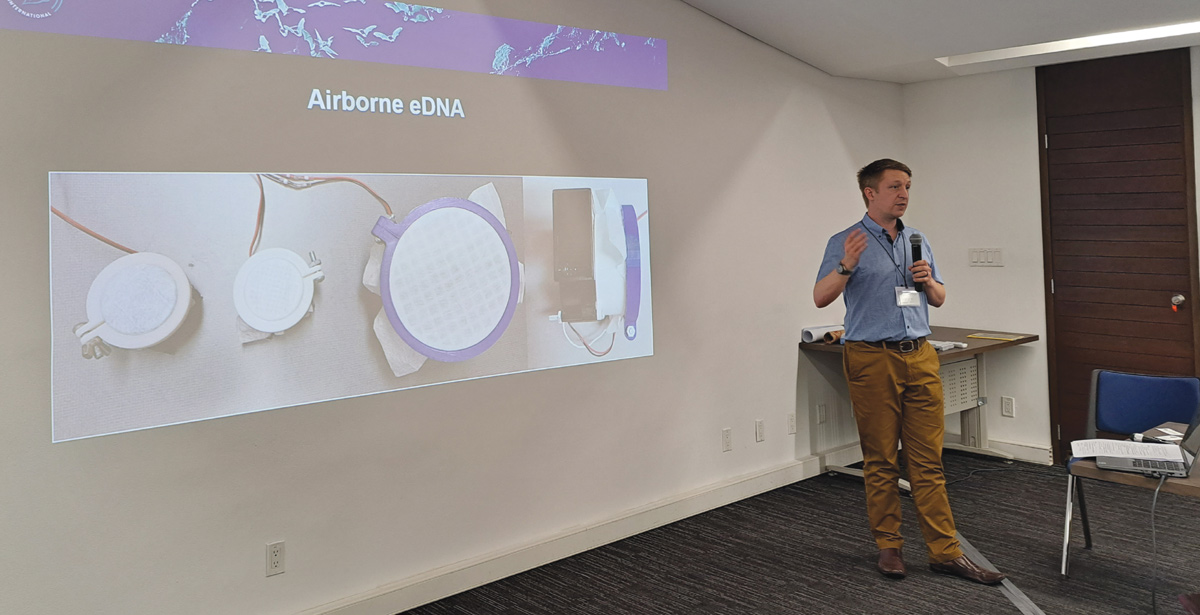
Florida bonneted bat work
Saving Bats
BCI established the largest known population of Florida bonneted bats (Eumops floridanus) with over 170 individuals in our specially designed artificial roosts in Miami–Dade County.
Receiving Awards
BCI and Zoo Miami received the 2022 U.S. Fish and Wildlife Service recovery champions award for Florida, as well as the 2022 Florida Nature Conservation Award from the Florida Association of Zoos & Aquariums.
Taking Legal Action
In partnership with Tropical Audubon, Bat Conservation International filed a state lawsuit to stop the destruction of the most critical foraging area for the Florida bonneted bat in Miami–Dade County.
Florida bonneted bat work
Saving Bats
BCI established the largest known population of Florida bonneted bats (Eumops floridanus) with over 170 individuals in our specially designed artificial roosts in Miami–Dade County.
Receiving Awards
BCI and Zoo Miami received the 2022 U.S. Fish and Wildlife Service recovery champions award for Florida, as well as the 2022 Florida Nature Conservation Award from the Florida Association of Zoos & Aquariums.
Taking Legal Action
In partnership with Tropical Audubon, Bat Conservation International filed a state lawsuit to stop the destruction of the most critical foraging area for the Florida bonneted bat in Miami–Dade County.
Discovery and protection of Livingstone’s fruit bat roost sites on Comoros
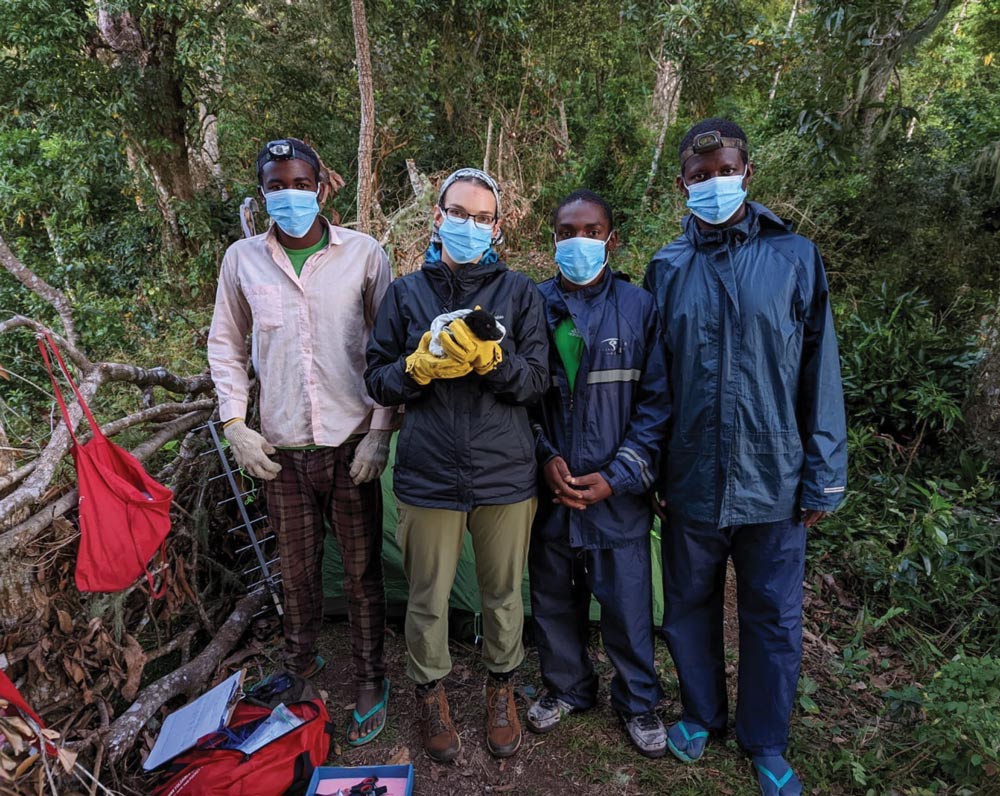
BCI’s work has supported the ongoing protection of seven roost sites representing habitat for 23% of the species’ global population, along with regular population monitoring. During fieldwork, BCI and Dahari’s research team were able to tag 22 bats and collect around 12 months of data. These tracking efforts led to the discovery of previously unknown roosts and potential feeding sites.

Guinea
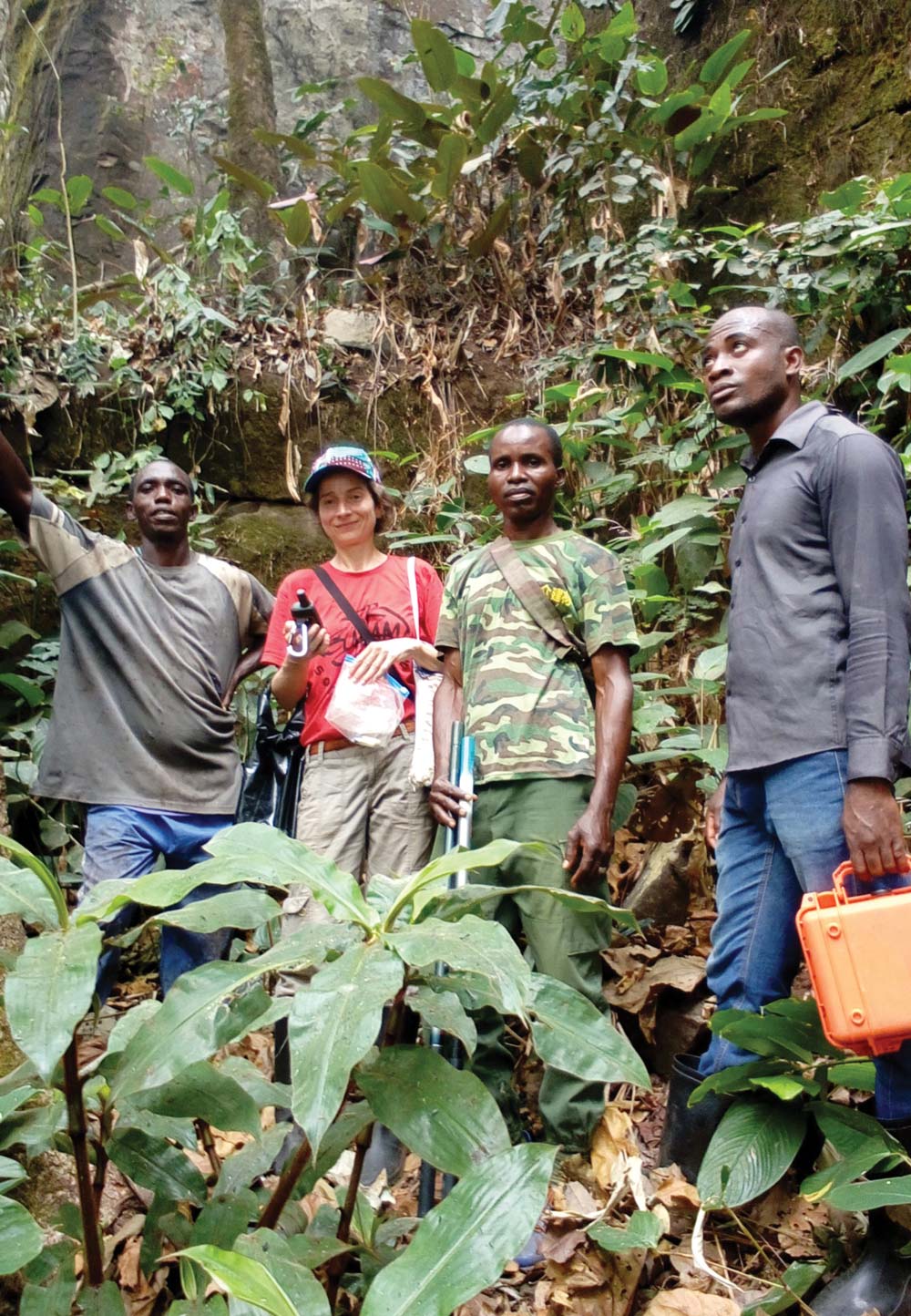
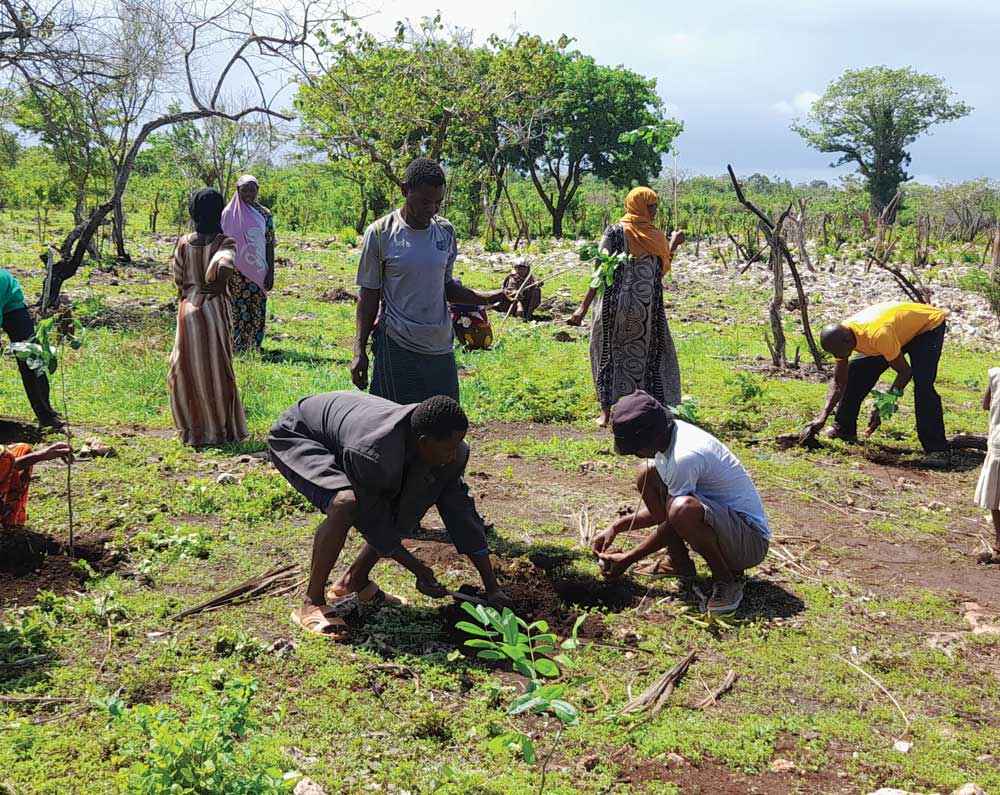

Kenya

Jamaica
Stony Hill & Saint Clair Caves
At Saint Clair Cave, home to Jamaican greater funnel-eared bats, feral cats are preying on the bats as they emerge each evening, so BCI and partners began installing a predator-proof fence at the location. In May 2022 the team was able to successfully carry out a LiDAR scan of the cave to learn more about its networks and passageways, and how they run under the landscape.
During fieldwork in Jamaica, the team was also able to work with the Polly Ground community and discuss long-term management of the site, as well as giving a talk about bats to kids at Polly Ground Primary School.
Mission 2
We Belong Together Video Campaign Highlights Agave Work
Photo: Dr. Kristen Lear
Agave Restoration Program Director
In northern Mexico and the southwestern U.S., Mexican long-nosed bat populations have decreased by half over the past several decades due to habitat loss and roost disturbance. Bats and agave have a mutualistic relationship, with bats flying from flower to flower drinking nectar and spreading the pollen that they collect on their fur, faces, and wings, helping to propagate new agaves. In turn, the agave flowers provide nourishment to pregnant female bats along their long-distance migratory journey.
Agave plants are also vitally important to people in the region, with a rich ethnobotanical history involving Mexican culture and religion. People use agaves to produce products like tequila, mezcal, bacanora, aguamiel, pulque, and agave syrup. The plants’ leaves, stalks, and rosettes can be used for everything from making paper and rope, to feeding cattle, and making soap. Agave roots help stabilize the soil and control erosion. However, land use change, unsustainable livestock grazing, climate change, and drought are among the threats agaves face.
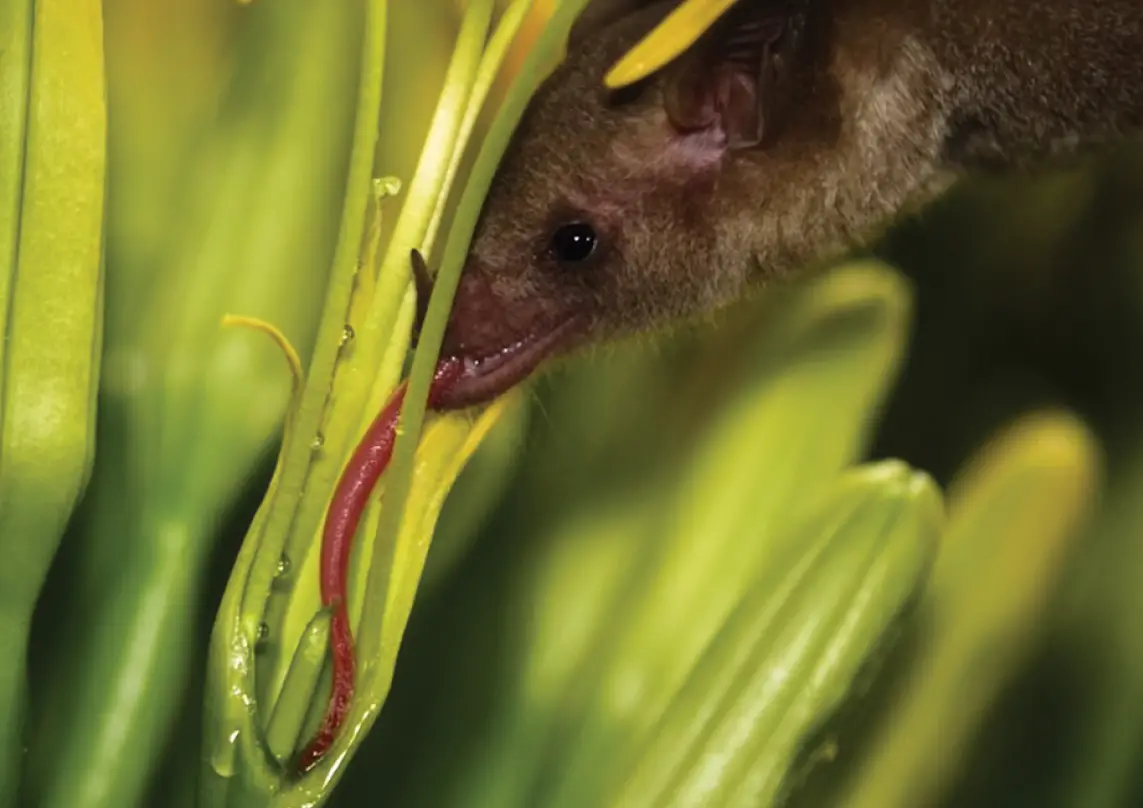
Agave Restoration Initiative Overview

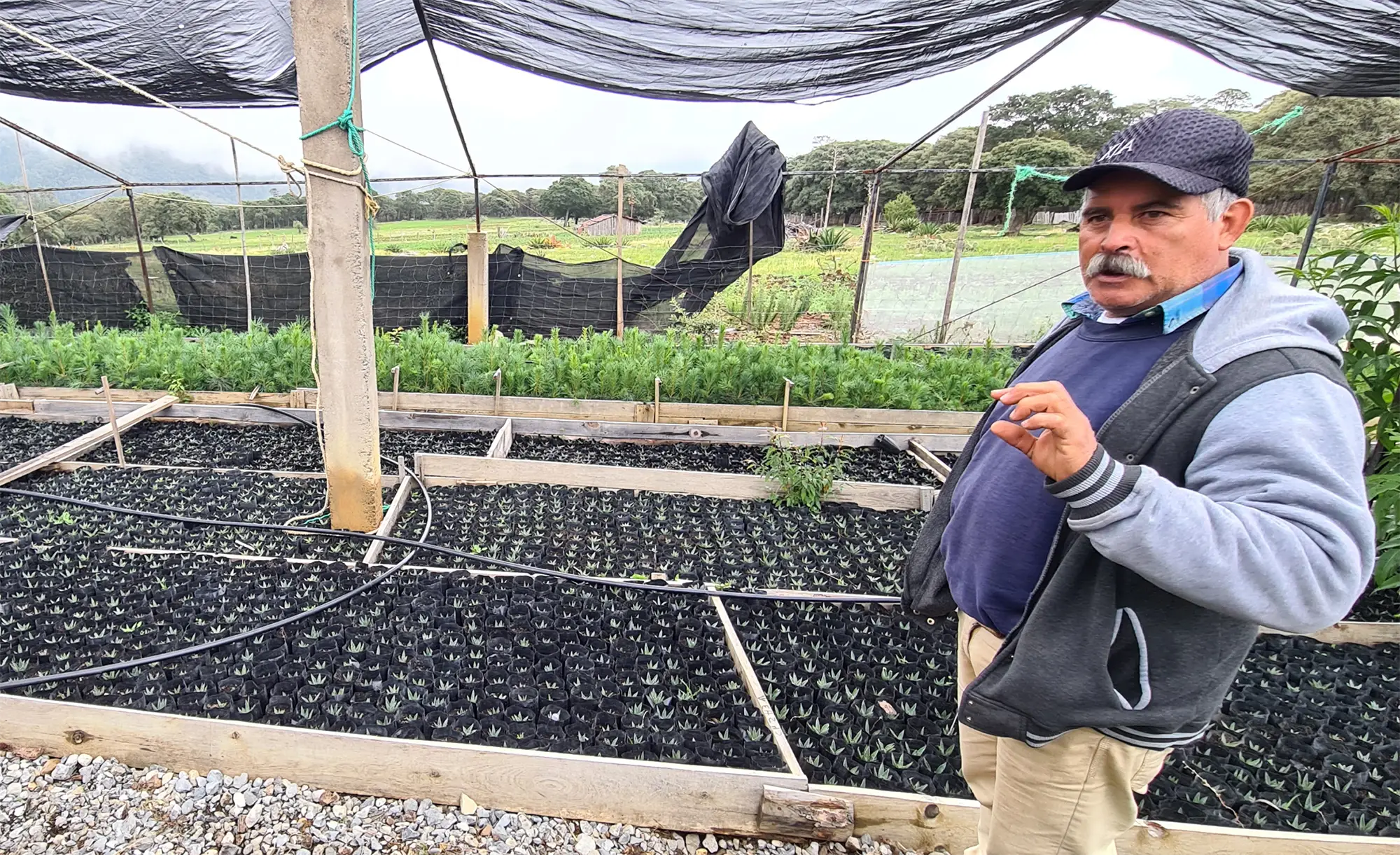

BCI and partners have supported 8 green agave business enterprises in Mexico’s rural ejidos, integrating sustainable agriculture and ranching to support community livelihoods and habitats for the Endangered Mexican long-nosed bat.
Photo: Nahum Sanchez
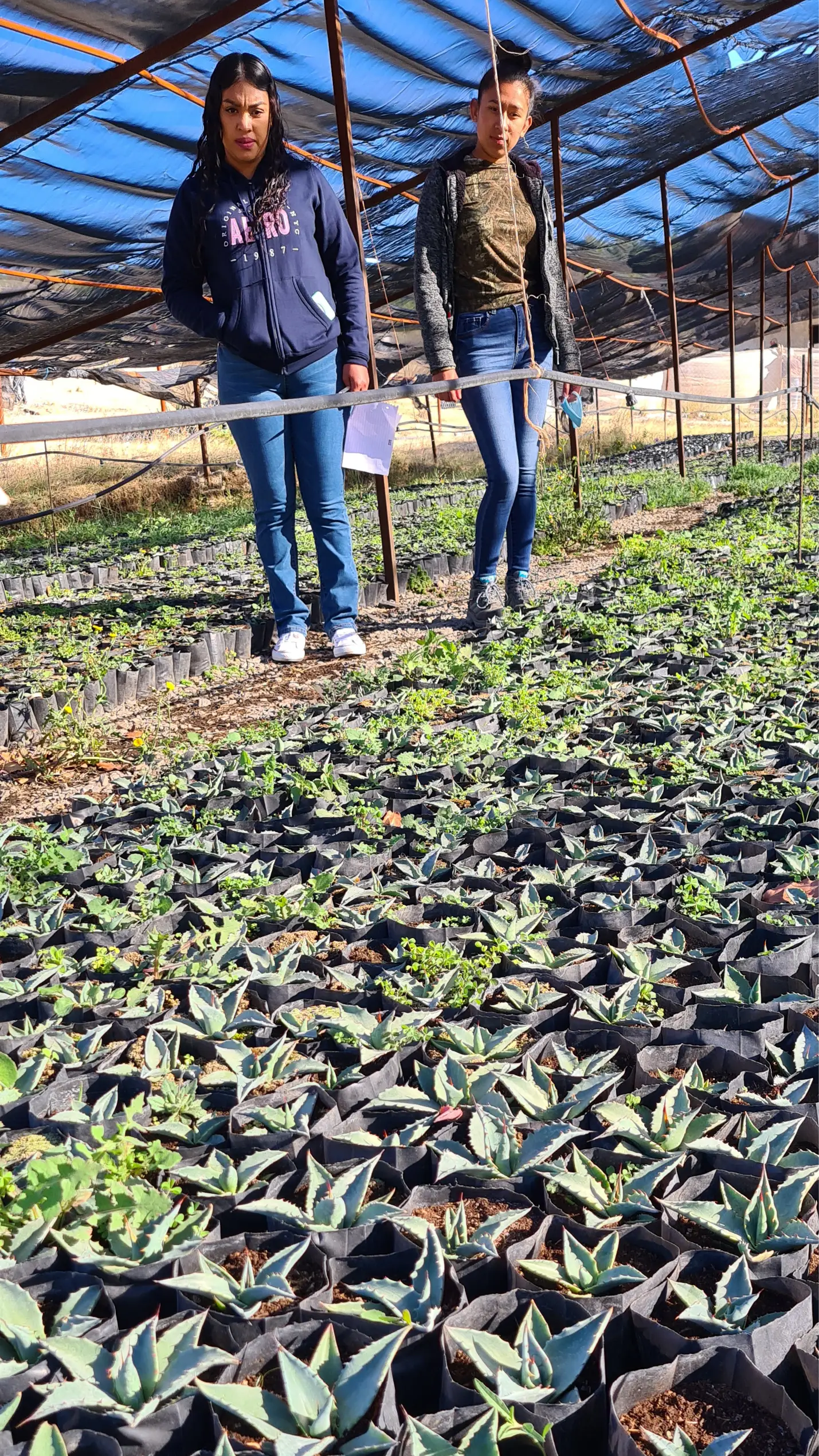

BCI coordinated knowledge exchange trips and meetings, including a regional network meeting in Nuevo León and a summit in Sonora, to highlight sustainable land management practices and encourage regional collaboration.
Photo: Nahum Sanchez
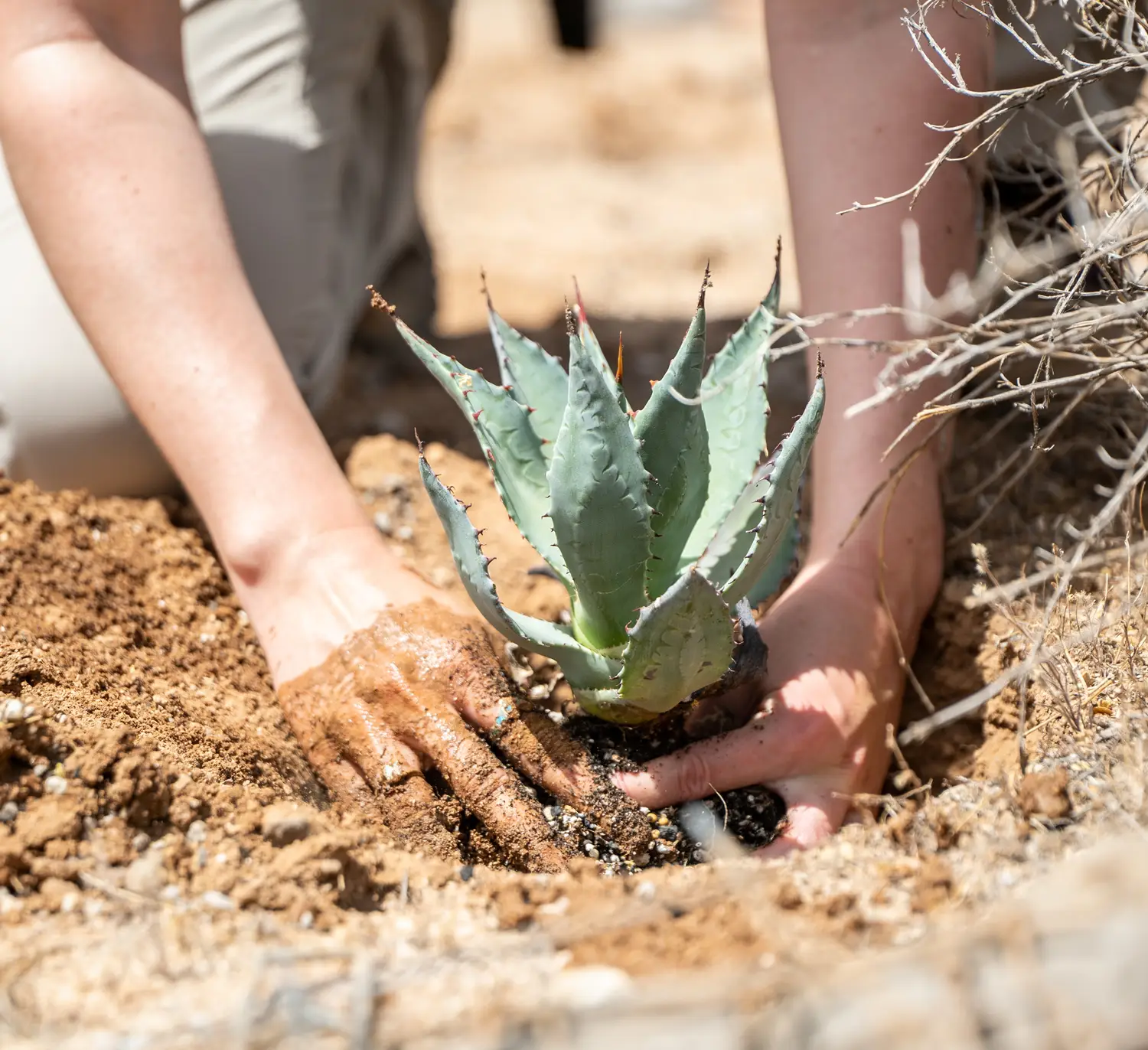

Sul Ross State University in Texas is growing 1,000 native agaves for upcoming restoration efforts in the Trans-Pecos area of Texas.
Photo: Horizonline Pictures
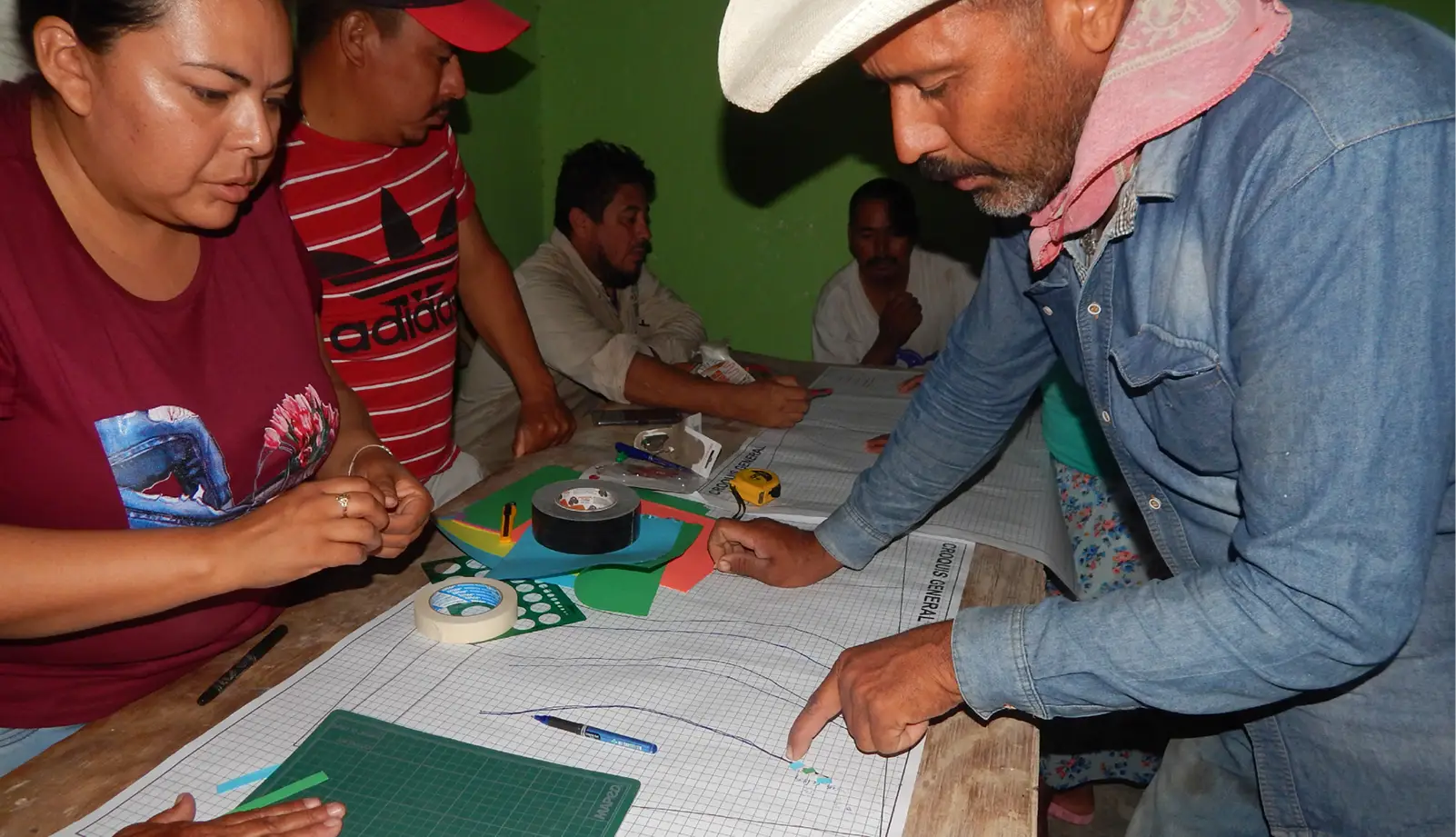

BCI partners provided technical training on regenerative agriculture and ranching to 161 community members. Additionally, partner Especies, Sociedad y Hábitat, A.C. conducted habitat assessments using drone technology.
Photo: Especies, Sociedad y Habitat, A.C.


Collaboratively with the Network, we released the revised Mexican Long-nosed Bat Recovery Plan.
Photo: Dr. Kristen Lear
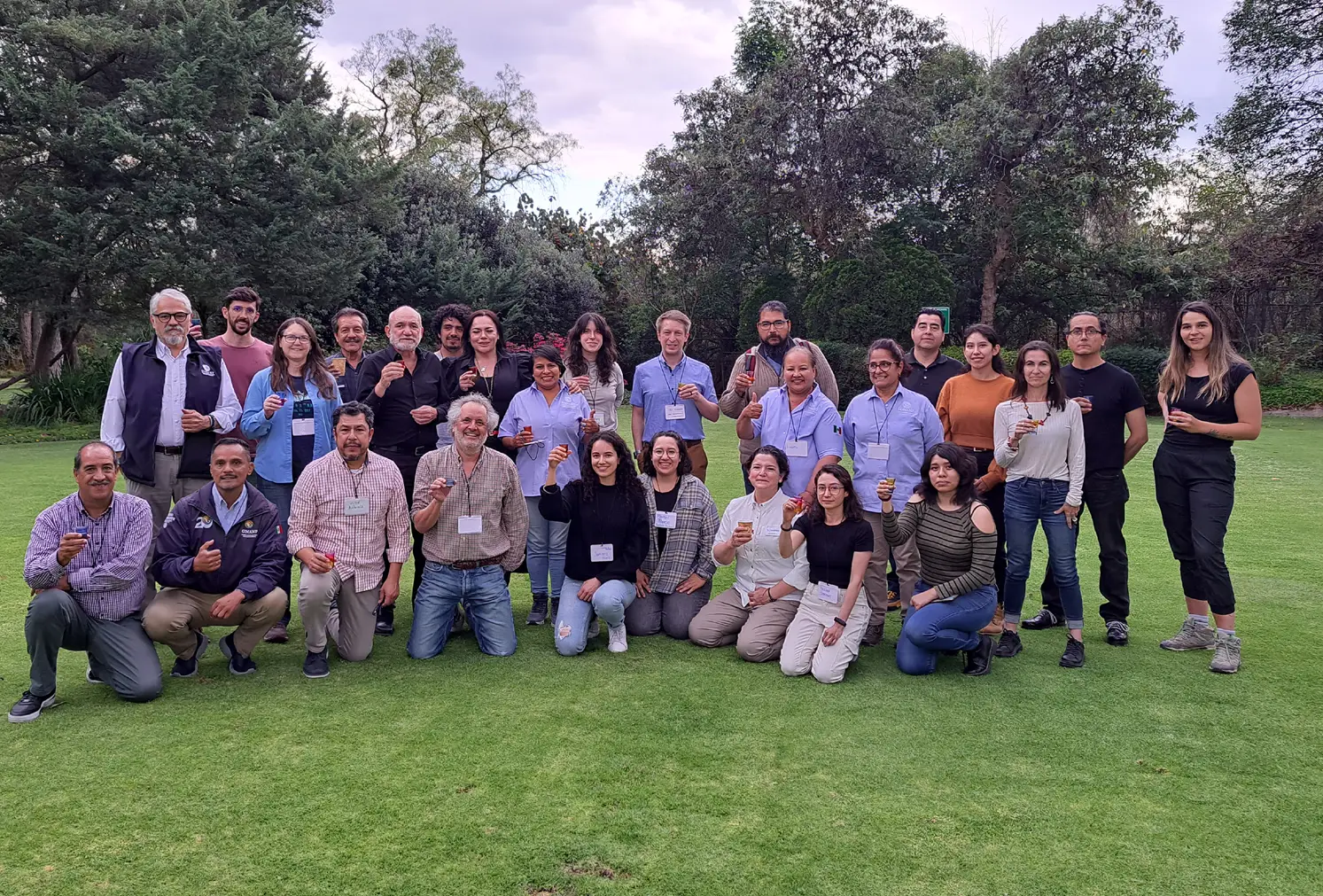
Protecting Bat Roosts in Abandoned Mines
In FY23, BCI entered into a new partnership with the U.S. Fish & Wildlife Service to identify and protect abandoned mines that serve as important bat and wildlife habitat. This work is being conducted nationwide under a multi-year agreement and represents an expansion of our conservation impact onto the National Wildlife Refuge System, which protects some of the finest wildlife habitat in the country.
BCI also conducted a major laser mapping (LiDAR) project of abandoned mine workings that underlie the Lake Valley Townsite in New Mexico, which is managed by the Bureau of Land Management. The LiDAR efforts yielded the most comprehensive site map to date, which hosts a significant number of Townsend’s big-eared bats, a Species of Greatest Conservation Need, throughout the year.
BCI’s Restoration Crew at Work

Shush Ken
In June of 2023, we constructed 2,000 feet of pipe-rail fence to protect the highly degraded Shush Ken (“Place of the Bears”) fen, a rare 3-acre wetland in New Mexico’s Zuni Mountains on the Mt. Taylor Ranger District of the Cibola National Forest. This will enable the fen to begin recovering after decades of overgrazing by trespassing cattle.
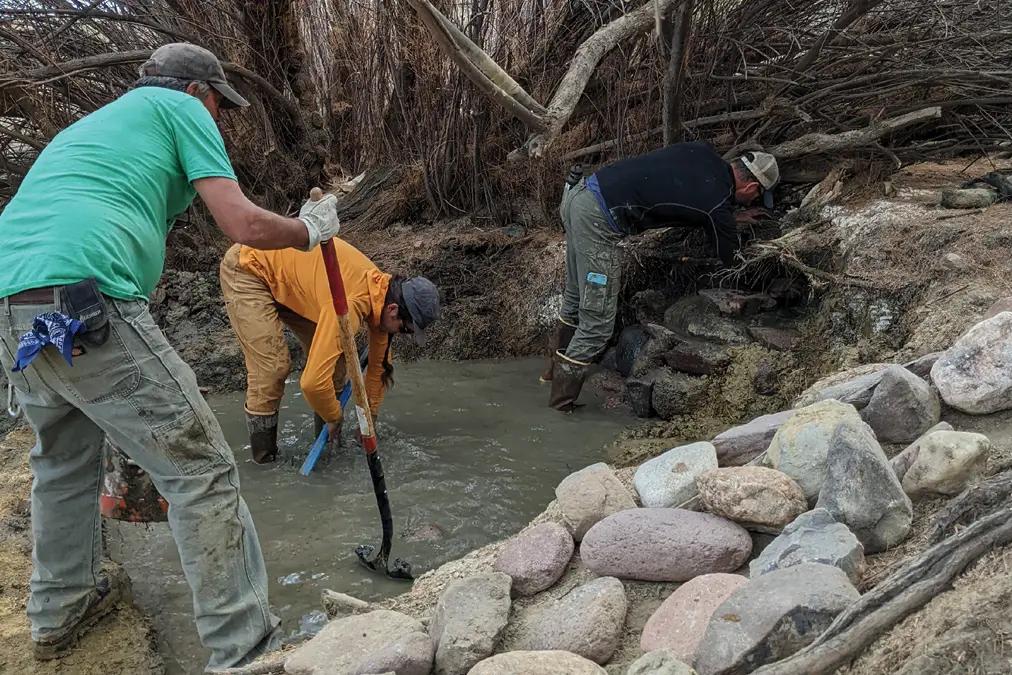
Mud Springs
We constructed a pipe-steel fence to protect a critical water source for more than 20 bat species (and other wildlife) from overgrazing by feral burros. Mud Springs is a heavily degraded natural spring on BLM administered lands in Arizona’s Sonoran Desert. The crew also constructed a drinking pool for bats downstream, along with erosion control structures to reduce sediment.

Black Canyon
Following the devastating 350,000-acre Black Fire, we began stream and riparian restoration efforts on three one-week-long trips to the Black Canyon of the Gila National Forest. Since the area is federally designated Wilderness, the crew used mules to carry gear and hand tools, plant more than 1,000 native willows and construct stream restoration structures from local materials to restore this important riparian bat foraging habitat.
Tools for Conservation: LiDAR and Drones
- In Mexico, following LiDAR scanning, a cave depth map related to Cueve de Oztuyehualco (formerly Cueva del diablo) helped bring better protection of the Mexican long-nosed bat.
- BCI launched the initial stages of the Unmanned Aircraft System (UAS) program which helps us make better management decisions on the landscape for both restoration and subterranean projects.
- LiDAR mapping of Jamaica’s St. Clair Cave helps provide more information about the cave network and its habitat.
Education & Outreach
BCI partner Laura Navarro published two Spanish language children’s books on the importance of bats and agave conservation.
BCI partner Battus launched the “Bat Friends Forever (BFF)” program to engage K-12 students in Mexico.
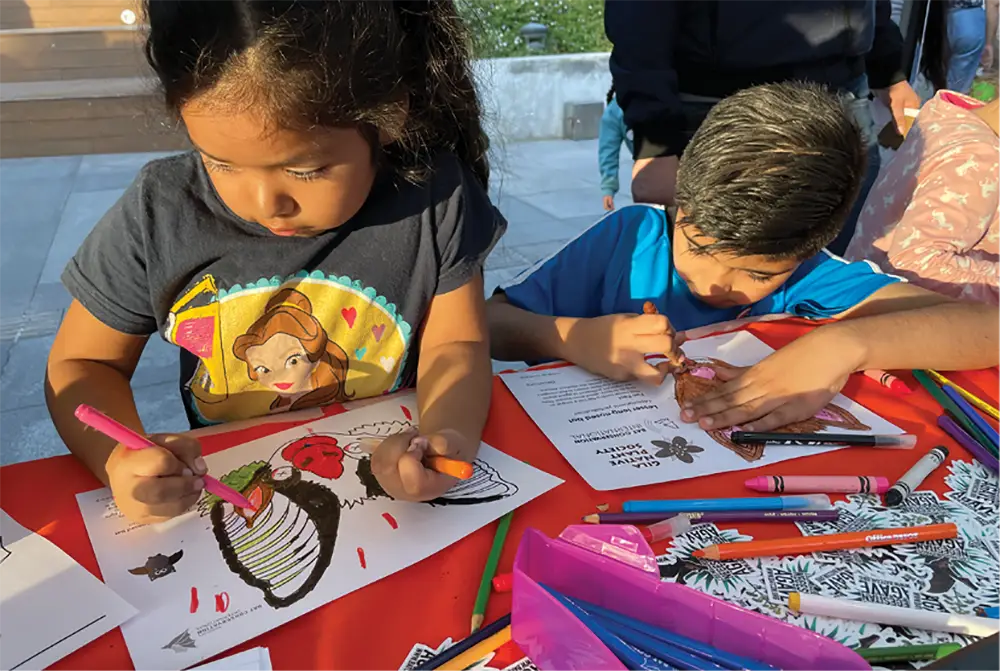
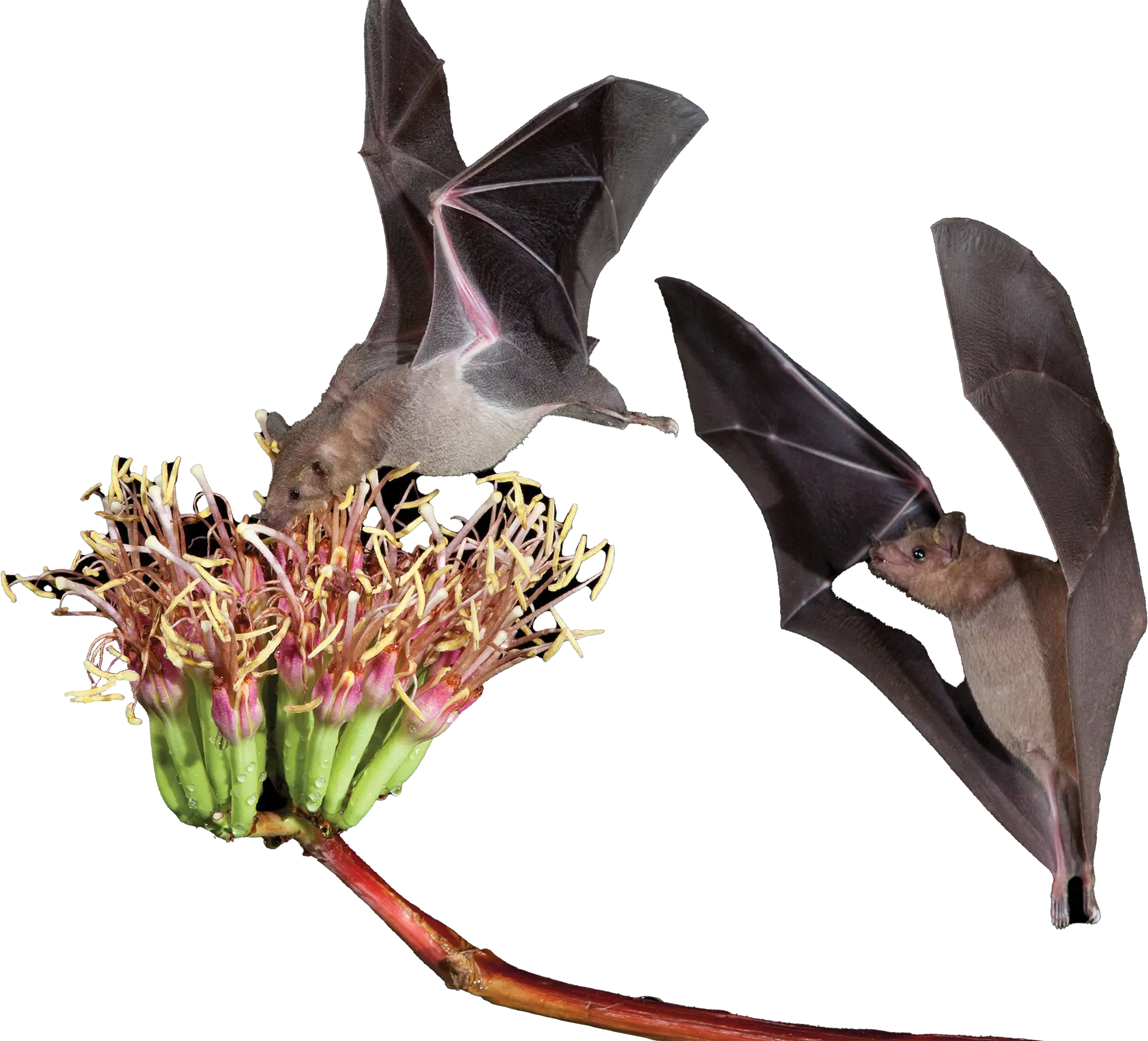
MISSION 3
Expert Assessment of Bat Extinction Risk
According to BCI Chief Scientist Dr. Winifred Frick, “The State of the Bats Report was a significant effort that brought together over 100 experts from Canada, USA, and Mexico. The trilateral effort was the first of its kind to provide a comprehensive assessment of bats and their threats in North America.” Experts used specific criteria to assess populations and threats for each species according to a systematic process.
The report establishes extinction threat levels for each species in each country, allowing conservation organizations to identify which bats are most at risk. It evaluates how major threats like climate change, white-nose syndrome, and wind farms imperil bat species, which will help scientists weigh the value of possible protective actions. It also documents a baseline population assessment that people can use for comparison with population status and trends measured in the future through the North American Bat Monitoring Program (NABat). This will help conservation groups determine which interventions are most effective.

Multiple Lines of Defense Against White‑nose Syndrome
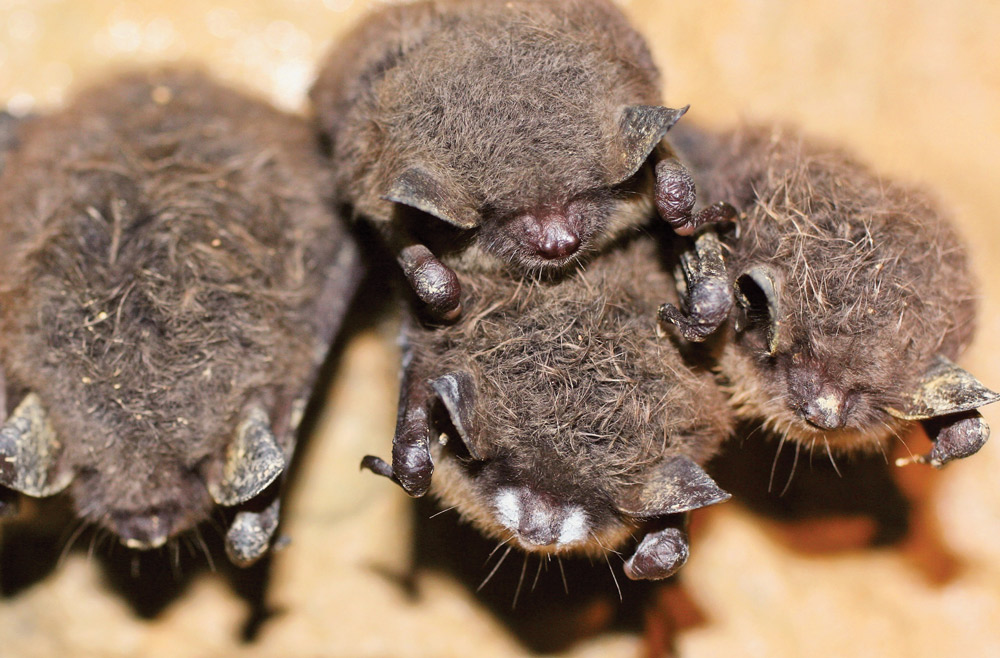
Another way to help bats suffering from WNS is to directly attack the fungus that causes the disease. BCI is working in collaboration with Oregon State University to create a biotechnology tool with the potential to destroy the fungal pathogen responsible for WNS. This year, the team received a grant to develop a tool based on synthetic RNA that interferes with key genes in the fungus and kills it. The highly specific nature of this tool means that it should be possible to use it in ecosystems and on bats without harming anything but the deadly fungus.
Protecting bat populations vulnerable to WNS is critical for preventing extinctions. BCI and the U.S. Fish and Wildlife Service are also designing a digital tool that helps managers prioritize roost sites for protection. This program compiles data about roost site characteristics like the site’s bat species, structure type, and temperature range. Coordinators can use it to identify roost sites that meet the criteria for their project goals, and to build collaborations that work towards species recovery.

Evaluating Solutions to Save Bats at Wind Farms
BCI focuses on developing and testing strategies to minimize bat fatalities without hindering the turbines’ clean energy production. This includes studying bat interactions with turbines, using 3D thermal video to observe their nocturnal activities.
In 2023, BCI evaluated smart curtailment devices that adjust turbine operations based on weather or echolocation signals, aiming to lower bat deaths.
BCI is investigating the impact of offshore wind farms on bats, especially in under-studied areas, and received a $1.6M grant to study the threat to bat populations along the Pacific coast. This involves researching bats’ migratory patterns and identifying high-risk periods.
These efforts contribute to safer wind energy production for bats and help meet global energy decarbonization goals.
Expanding Bat Conservation Research Globally and into the Future
In 2023, BCI selected 14 graduate students representing 12 nationalities to receive the annual student scholarship. With BCI’s financial support, these students conducted bat research across five continents in 11 countries.

Monitoring Bat Populations Across North America
Analyzing echolocation recordings from NABat’s stationary acoustic sites allows scientists to assess separate species in particular regions over defined time periods. BCI collaborates with NABat and Conservation Metrics Inc. to process acoustic monitoring data through the National Data Processing Lab. In 2023, BCI submitted acoustic monitoring data for 1,133 survey locations across 379 sites/cells for a wide range of federal and private partners across the U.S. This year, BCI also significantly expanded the number of NABat sites by entering a partnership with the U.S. Air Force to support Air Force bases to gather bat monitoring data and contribute it to NABat.
This year, BCI collected bat health data from 2,675 bats of 29 species and conducted NABat acoustic monitoring at 77 sites. The results of this work will help us understand the relationship between the health of ecosystems, bats, and humans.
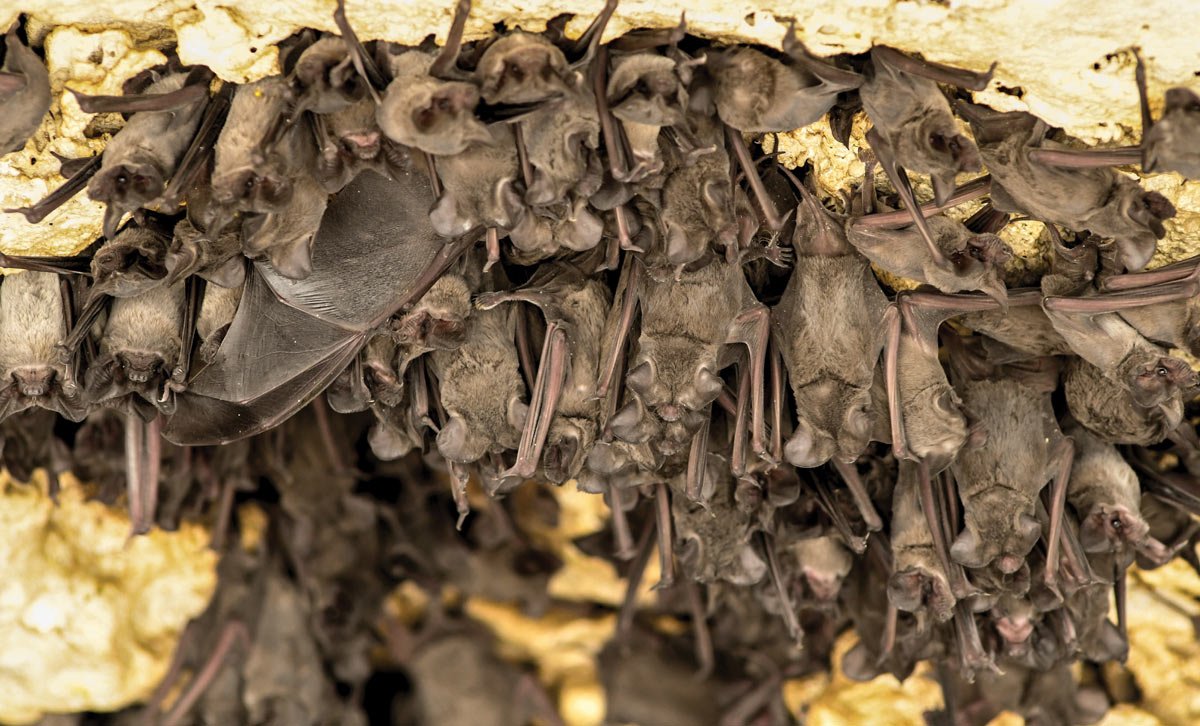

Solid Evidence Amplifies Conservation’s Impact
In 2023, BCI launched a new Conservation Evidence program—a move that demonstrates a serious commitment to data-driven conservation. To ensure the success of this program, BCI hired the first Director of Conservation Evidence.
This year, the independent research organization Conservation Evidence has reaffirmed BCI’s status as a Conservation Evidence Champion. This designation recognizes the use of science-based evidence to demonstrate the effectiveness of conservation interventions across BCI’s programs.
MISSION 4
Partnering with
Austin Youth River Watch
As part of AYRW’s bat programming, the kids took a field trip to Bracken Cave, and students were also able to see some of Austin’s famous bats on a boat ride on Lady Bird Lake. Additionally, BCI worked with the students to design, build, and maintain a bat garden at AYRW’s headquarters. The garden incorporates an array of plants that lure in tasty insects to help provide food for bats, as well as providing habitat features.
Surveys before and after the bat‑focused programming measured a marked positive change in students’ attitudes towards bats, and an increased awareness of their value to the ecosystem.
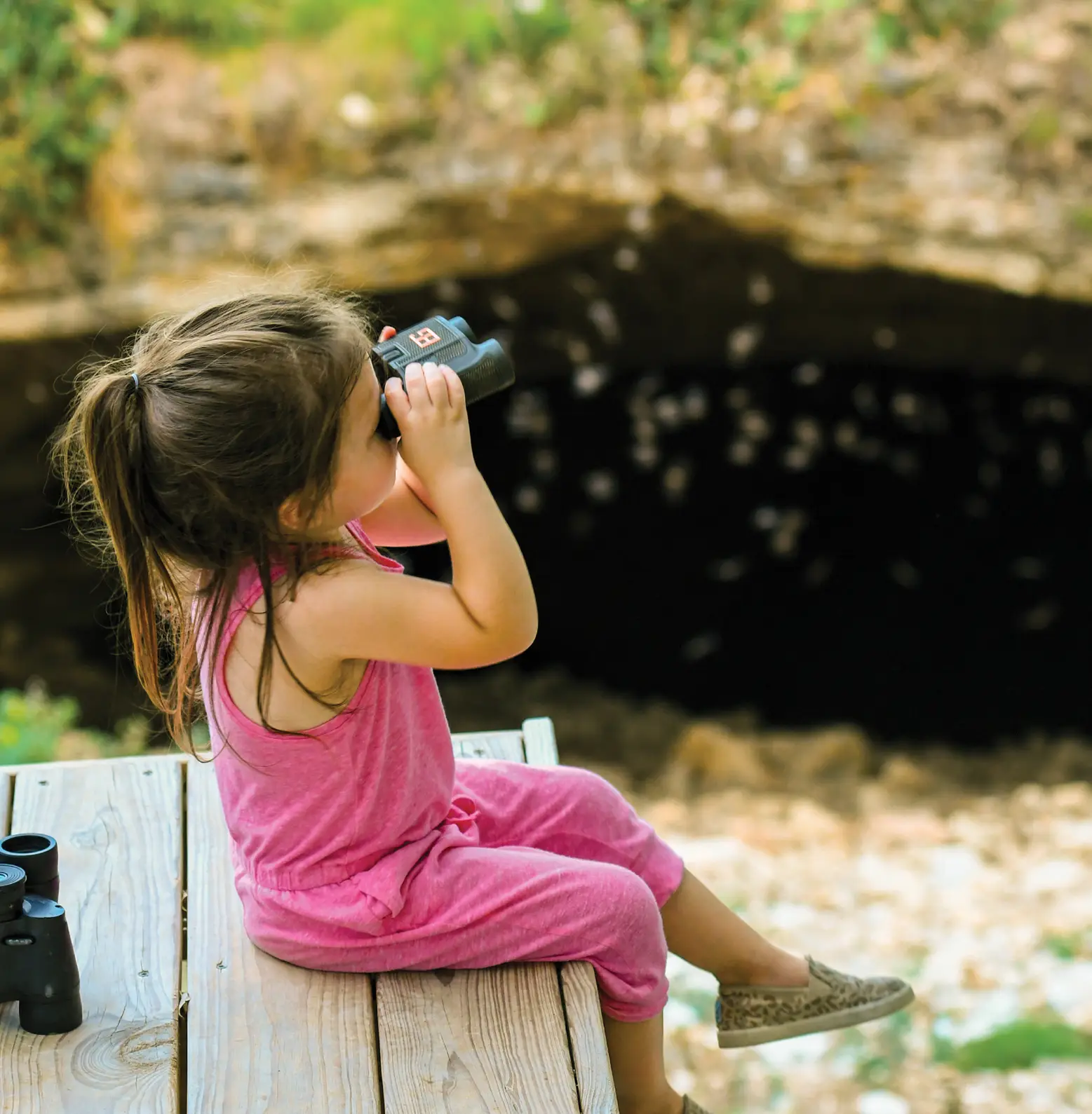
Bracken Cave
During FY23, BCI hosted 158 bat flight events at Bracken Cave, and 8,058 visitors were able to experience the wonder for themselves.
Bat Walks
Gardening for Bats
During FY23, BCI hosted 158 bat flight events at Bracken Cave, and 8,058 visitors were able to experience the wonder for themselves.
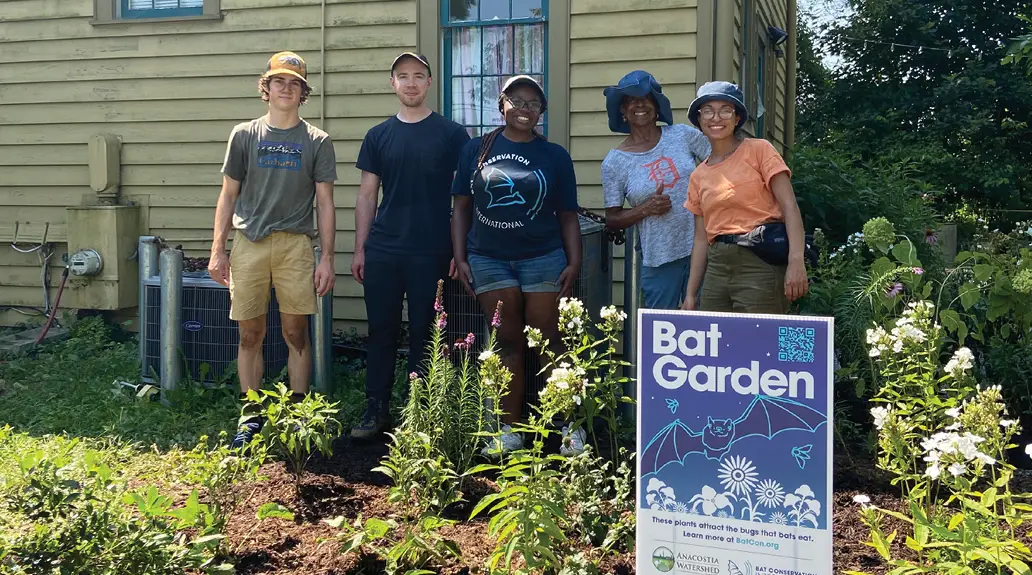
During FY23, BCI hosted 158 bat flight events at Bracken Cave, and 8,058 visitors were able to experience the wonder for themselves.
Justice, Equity, Diversity and Inclusion
Our Approach to Integrating Justice, Equity, Diversity and Inclusion
Strengthening Our JEDI Capabilities
Released a new Staff Policy Manual that reinforces JEDI throughout BCI’s conduct and operating policies, from fostering a healthy workplace, to discrimination and harassment, to annual salary equity audits.
Strengthened our international operating practices and hired BCI’s first staff member outside the United States. This has reinforced efforts to build a diverse and inclusive organization.
Continued to invest in JEDI-related learning and development, including two cohorts of Empathy Coaching with Syah B. Consulting. To date, 20 BCI staff members have completed Empathy Coaching, with more cohorts planned for fiscal year 2024.
Applying Lessons Learned to Guide Forward Action
Evaluated our progress and challenges in recruiting, hiring, and retaining staff from marginalized identities. BCI identified potential actions throughout the hiring and onboarding processes to create a more inclusive working environment.
Assessed our first-year partnership with the nonprofit organization Austin Youth River Watch (AYRW), which serves youth in Austin, Texas. BCI worked with AYRW to identify ways to support and add value to their already impactful work while promoting the importance of bats and bat conservation. BCI learned how to build more intentional, co-created partnerships to reach more diverse audiences and supporters. AYRW and BCI agreed that the first-year partnership was successful and committed to a second year.
Developed BCI’s JEDI 2.0 plan to guide future action. The plan is based on progress made, along with reflections on what BCI has learned since beginning this work, including challenges faced. The plan includes actions to create a more inclusive organizational culture and develop standards for practicing JEDI in program design and implementation.
Increasing Investment to Embed JEDI Across Our Program Work
Launched the Global Sustainability Community of Practice, an effort to accelerate bat conservation efforts that halt biodiversity loss in ways that contribute to a more sustainable world and benefit local communities. The initial plans include developing a framework that guides how to design bat conservation projects to contribute towards the United Nations Sustainable Development Goals and applying what is learned to create JEDI standards to implement our work.
Passed a budget for fiscal year 2024 that includes additional resources for JEDI work, such as increased BCI staff time to execute the JEDI workplan, actions that create and sustain belonging, learning and development activities, and consulting fees for JEDI and global sustainability practitioners.
Financial Summary
Statement of
Financial Position
Statement of
Activities
Your
donations
At Work

Programs
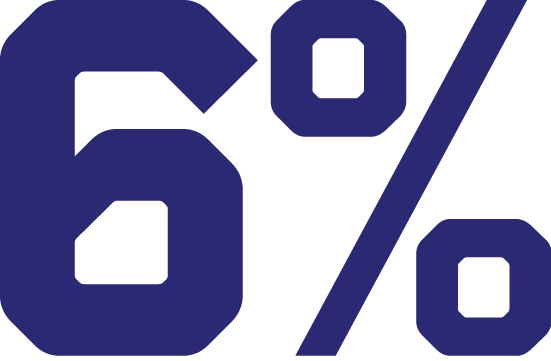
Fundraising and Development

General and Administrative

DONOR PROFILES
Disney Conservation Fund generously contributes to Agave Restoration Initiative

Director of Institutional Engagement
Since 1995, the Disney Conservation Fund has given $125 million to organizations around the world, in support of community-based biodiversity conservation efforts.
DCF has been a valued BCI donor for the past 25 years. We are proud to work together with DCF to protect the magic of nature for future generations.
The goal of the Agave Restoration Initiative is landscape-level protection of native agaves along pollinating nectar bats’ migratory pathway in Mexico and the Southwest U.S. This grant project in Mexico focuses on saving the Mexican long-nosed bat (Leptonycteris nivalis) through community-based efforts. Ejido community members, who collectively own and farm land, are key partners, along with numerous organizations and other partners.
DCF grant funding will support the creation of eight green enterprises that restore wild agaves and produce products from agave, with five focusing on agave plant nurseries, two on aguamiel production, and one on mezcal. The goal for the next five years is to establish 19 more green enterprises. These businesses utilize ecologically sound strategies, and the first pilot projects are moving rapidly towards self-sufficiency. The DCF funding to expand this work will have a positive impact on communities, habitats, and wildlife—including bats.

Pledging a love of bats through recurring donations
As a young child, Bonnie Tom was fascinated by bats, and she loved seeing them fly through the sky in the evening. She’s always kept an eye out for bats. Two years ago, she got an even closer look when she found one in the shower of her New York home. Instead of panicking, she admired the bat, which she describes as “the cutest thing ever,” from a safe distance while she researched local professionals to humanely remove her unexpected houseguest. During the process, she learned a lot about bats, and this newfound knowledge spurred her interest in bat conservation efforts, which led her to find BCI and become a supporter. Recently, she showed her dedication to bat conservation by establishing a recurring annual donation to BCI.
Recurring donations have a huge impact on the work and research needed to save bats and their habitats. Having a reliable stream of funds allows our science and conservation teams to focus on the bats and not on the funds. Bonnie was captivated by our recent Bats Need Agave Campaign. “It reminds me of the migration of monarchs down to Mexico and their reliance on milkweed, but the bat migration is far less publicized and just as important,” Bonnie says.
Today, Bonnie lives in Washington, D.C. with her husband, Philip, and their dog, Mowgli, and she is always keeping an eye out for bats. Bonnie’s shower bat is lucky to have found itself inside the home of someone who understood the value of bats, and BCI is lucky that Bonnie is inspired by our portfolio of bat-saving work.

Merrill Howe Leavitt’s generous bequest helps protect bats
Merrill Howe Leavitt always loved animals and nature. When she was a young girl, Merrill loved seeing the bats near her family’s New Hampshire farmhouse. As an adult, Merrill adopted “unadoptable” dogs and cats, giving them comfortable and happy lives.
Throughout her life, she prioritized nature and animals, while also focusing on her love of education and learning. After graduating from NYU, she joined the Peace Corps and volunteered in Nicaragua, where she kept a horse and a parrot.
After she completed her service, Merrill moved near Denver, hiking many of the “14er” mountains in the Rockies and earning a master’s degree to become a CPA. In her 50s, she completed another master’s degree to become a teacher focusing on elementary school math and science. After retirement, she spent her time with two-legged and four-legged friends and enjoyed many hobbies.
As a BCI member, she followed bat science and kept an art print of a bat in her dining room. When she passed away in January of 2023, just a few days after her final pet, a basset hound mix, died, Merrill’s family and friends learned of her generous planned donation to BCI. Her loved ones thought it fitting since she was a principled conservationist and lover of bats and other wildlife.
Today, her generous forethought is helping save bats throughout the world. Notably, when we discovered one of the last remaining roosts of the Hildegarde’s tomb bat (Taphozous hildegardeae) in Kenya was under immediate threat from development, we were able to mobilize to start working through the legal process to purchase and protect the site. We’re honored by Merrill, and others like her, who make the deeply personal choice to include BCI in their estate plans, ensuring we have the means to quickly respond to emergencies like this one.
PUBLIC AND PRIVATE SUPPORTERS
-
Corporate
AmazonSmile
- Apex Clean Energy Inc.
- Bread Financial
- Bridge Point Doral 2700 LLC
- Disney Conservation Fund
- DocuSign
- Duke Energy Foundation
- Florida Power and Light
- Freeport-McMoRan
- Google Matching Gifts Program
- H-E-B
- Horizonline Pictures
- Jonathan Alonzo Photography
- Lion Country Safari
- Lone Star Woodcraft LLC
- Mustangs Baseball LLC
- Noise Engineering
- Nyungwe Management Company
- Rangeland Hands Inc
- The Standard
- Tito’s Vodka
- Wildlife Acoustics
-
Foundation
Adele M. Thomas Charitable Foundation, Inc.
- BAND Foundation
- The Barrett Foundation
- Charles E Bartberger and Gretchen M Platt Family Foundation
- The Batchelor Foundation, Inc.
- The Berglund Family Foundation
- Boeckman Family Foundation
- The Brown Foundation, Inc. of Houston
- Buckmaster Foundation
- Burt Family Foundation
- The Carter Chapman Shreve Family Foundation
- Colorado State University Foundation
- Coypu Foundation
- The Frank Cross Foundation
- Deupree Family Foundation
- Dume Wolverine Foundation
- Walter C. Emery Family FouFndation
- William Howard Flowers, Jr. Foundation, Inc.
- Edward Gorey Charitable Trust
- The Thomas C. and Mary Ann Hays Family Charitable Trust
- Head and Heart Foundation
- The Hellman Family
- Jacob and Terese Hershey Foundation
- The Tim and Karen Hixon Foundation
- Robert McLean Foundation Trust
- The Meadows Foundation
- Henry S and Margaret Gay Mika Charitable Foundation, Inc.
- Leo Model Foundation, Inc.
- The Negaunee Foundation
- New Hampshire Charitable Foundation
- The Pattee Foundation Inc.
- Read Foundation
- Shared Earth Foundation
- Singing Field Foundation
- SK Foundation
- St. Louis Community Foundation
- The Darrell & Patricia Steagall Family Foundation
- The Towhee Fund
- Tini Lulu Fund
- The White Pine Fund
- The Lawrence and Sylvia Wong Foundation, Inc.
- The Woodtiger Fund
- Wright-Ingraham Institute
-
Government and organization
African Parks
- Alliance for Americas Fish and Wildlife
- Alterd Alternativas para el Desarrollo, A.C.
- Amigos de la Sierra, A.C.
- Anacostia Watershed Society
- Angelo State University
- Arizona Game and Fish Department
- Asesores en Planeación de Sistemas Socioambientales, S.C.
- Asociación de Mujeres del Bacanora y Maguey de México
- Association of Fish and Wildlife Agencies
- Austin Youth Riverwatch
- Bacanora Siete Coronados
- Bats and Wind Energy Cooperative
- Battus
- Bioconciencia, A.C.
- Bisbee Bloomers
- Bonnet House
- Borderlands Restoration Network
- Broward County Parks and Recreation
- Bureau of Land Management
- Bureau of Ocean Energy Management
- California Department of Fish and Wildlife
- Carlton Fields
- Center for Biological Diversity
- Centro de Colaboración para la Ciencia y Cultura
- CIIDIR Unidad Durango, Instituto Politécnico Nacional
- City of Bisbee, Arizona
- Colectivo Caminantes del Desierto, A.C.
- Colectivo Sonora Silvestre
- Colorado State University
- Comisión Estatal de Biodiversidad (Hidalgo)
- Comisión Estatal de Biodiversidad (Morelos)
- Comisión Nacional de Áreas Naturales Protegidas
- Comisión Nacional de Áreas Naturales Protegidas, Región Centro y Eje Neovolcánico
- Comisión Nacional de Áreas Naturales Protegidas, Región Noreste (CONANP)
- Comunidad Santo Domingo Ocotitlán (Morelos)
- Consejo Sonorense Regulador del Bacanora
- Conservation Evidence
- Conservation Metrics
- Consultoría, Asesoría y Manejo Estratégico, S.C.
- Cuantico, Global Eco Services
- Cuena Los Ojos
- Dahari
- Dallas Zoological Society
- Detroit Zoological Society
- EarthShare
- EarthShare of Texas
- Ecosystem Restoration Alliance
- Edward Gorey Charitable Trust
- Ejido 20 de Noviembre, Coahuila
- Ejido Coyotillos, Zacatecas
- Ejido Cuatro Milpas, Zacatecas
- Ejido El Potrero de Zamora, Nuevo León
- Ejido El Saucillo, Nuevo León
- Ejido Estanque de Norias, Coahuila
- Ejido Guadalupe Victoria, Coahuila
- Ejido Huertecillas, Zacatecas
- Ejido La Encantada, Nuevo León
- Ejido La Reforma, Coahuila
- Ejido Las Huertas, Zacatecas
- Ejido Los Encinos, Zacatecas
- Ejido Salto de Guass, Zacatecas
- Ejido San Joaquin de Soto, Nuevo León
- Ejido Santa Teresa, Zacatecas
- Ejido Tanque de Emergencia, Coahuila
- Ejido Tanque de López, Zacatecas
- Ejido Tepetate, Zacatecas
- Ejido Vanegas de Juárez, Zacatecas
- Ejido Zaragoza, Zacatecas
- El Paso Zoo
- Electric Power Research Institute
- Endangered Species Coalition
- Environmentally Endangered Lands Program, Miami–Dade County
- EspacioNaturalArq
- Especies, Sociedad y Hábitat, A.C.
- Fairchild Botanical Garden
- Fiesta Youth
- Florida Bat Working Group
- Florida Fish & Wildlife Conservation Commission
- Florida International University
- Garden Ridge Women’s Club
- Gila Native Plant Society
- Gila Watershed Partnership
- Girlstart
- Global Union of Bat Diversity Networks
- Gorilla Doctors
- Greenspaces Alliance
- Guinea Ecologie
- Hogan Lovells
- I am a Scientist
- Instituto de Ecología, Universidad Nacional Autónoma de México
- International Union for Conservation of Nature
- IUCN Species Survival Commission Bat Specialist Group
- Jacksonville Zoological Society
- The Jamaican Caves Organization
- James Bonham Academy
- Laguna de Sánchez, Nuevo León
- Latinitas
- Maasai Mara University
- Max-Planck Institute of Animal Behavior
- Miami Beach Botanical Garden
- Miami Blue Chapter of the North American Butterfly Association
- Miami Pine Rockland Coalition
- Monkey Jungle
- Nakanacagi village
- Naples Zoo
- National Environment and Planning Agency
- National Fish and Wildlife Foundation
- National Park Service
- National Parks Conservation Association
- National Renewable Energy Lab
- The National Trust of Fiji
- National Wildlife Federation
- Native Plant Society of New Mexico
- Naturalia, A.C.
- The Nature Conservancy of Texas
- NatureFiji–MareqetiViti
- Nevada Department of Wildlife
- New Mexico Department of Energy, Minerals and Natural Resources Department
- New Mexico Department of Game and Fish
- North American Bat Conservation Alliance
- North American Bat Monitoring Program
- North American Pollinator Protection Campaign
- North American Society for Bat Research
- Northern Arizona University
- Palmetto Bay Garden Club
- Palo Alto Escuela Americana
- Parque Ecológico Chipinque
- Parques y Vida Silvestre de Nuevo León
- Patch of Heaven Sanctuary
- Pennsylvania Game Commission
- Pinecrest Gardens
- Pollinator Partnership
- Polly Ground Community
- PROFAUNA, A.C.
- Programa para la Conservación de Murciélagos de Colombia
- Programa para la Conservación de Murciélagos de México
- Pronatura Noreste, A.C.
- Protección Civil Estatal (Morelos)
- Protect Paradise
- Rancho La Rita
- Renewable Energy Wildlife Institute
- Round Rock Independent School District
- Rutgers University, Newark
- Rwanda Development Board
- Rwanda Wildlife Conservation Association
- Salazar Center for North American Conservation
- Secretaria de Medio Ambiente e Historia Natural (Chiapas)
- Shippensburg University
- Sierra Club
- South Florida Water Management District
- Sul Ross State University
- Tejocote, Nuevo León
- Tepoztlán, Morelos
- Texas Master Naturalists
- Texas Parks and Wildlife Department
- Tropical Audubon Society
- Tucson Agave Heritage Festival
- Tucson Audubon Society
- Tucson Mission Garden
- U.S. Air Force
- U.S. Army
- U.S. Department of Energy
- U.S. Fish & Wildlife Service
- U.S. Forest Service
- U.S. Geological Survey
- Universidad Autónoma de Chihuahua
- Universidad Autónoma de Tamaulipas
- Universidad Autónoma del Estado de Hidalgo
- Universidad Autónoma del Estado de Morelos
- Universidad de Antioquia
- Universidad de Ciencias y Artes de Chiapas
- Universidad del Rosario
- Universidad Nacional Autónoma de México
- Universidade Federal de Pernambuco
- University of Hyderabad
- University of Miami
- University of Tennessee, Knoxville
- University of Vienna
- White-Nose Syndrome Response Team
- Wildlife Conservation Society
- Wildlife Habitat Council
- Yo Miami
- Young Women’s Leadership Academy
- Zoo Miami
-
LEGACY CIRCLE
We extend our sincere gratitude to the following individuals who thoughtfully added Bat Conservation International to their estate plans between July 1, 2022 and June 30, 2023, ensuring a lasting legacy of support for the preservation of bats around the globe.
- Learn more:
batcon.org/Legacy - Kelsey Brodt
- John Brooke
- Crystal R. Emberton Hardy
- Antonia Govoni
- Christine D. Jensrud
- Timothy J. Jensrud
- Ashley C. Nichols
- Kristie F. Phillips
- Thomas R. Rowe
- Jillian M. Tevnan
- Julie Whitacre
- Francisco Zuniga
Leadership Team
-
Board of Directors
Dr. Charles Chester Board Chair
- Dr. Andy Sansom Vice Chair
- Donald Kendall, Jr. Treasurer
- Eileen Arbues Secretary
- Dr. Gerald Carter Director
- Gary Dreyzin Director
- Dr. Brock Fenton Director
- Ann George Director
- George Hixon Director
- Danielle Gustafson Director
- Dr. Shahroukh Mistry Director
- Alexander R. Read Director
- Dr. Nancy Simmons Director
- Jenn Stephens, MBA Director
- Roger Still Director
-
Science Advisory Committee
Dr. Nancy Simmons Science Advisory Committee Board Liaison
- Dr. Gerald Carter Director
- Dr. Brock Fenton Director
- Dr. Enrico Bernard
- Dr. Luis F. Aguirre
- Dr. Sara Bumrungsri
- Dr. Stuart Parsons
- Dr. Gary F. McCracken
- Dr. Paul A. Racey
- Dr. Tigga Kingston
- Dr. Danilo Russo
- Dr. Liliana M. Dávalos
- Dr. Paul W. Webala
-
Senior Leadership
Mike Daulton Executive Director
- Mylea Bayless Chief of Strategic Partnerships
- Dr. Winifred Frick Chief Scientist
- Michael Nakamoto, MBA Chief Operations Officer
- Kevin Pierson Chief of Conservation and Global Strategy


